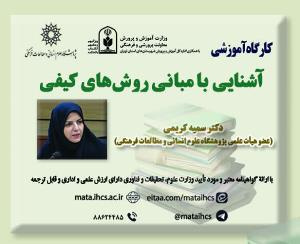تحلیل گفتمان انتقادی در روایت های زنان تحت خشونت خانگی بر اساس مدل کنشگران اجتماعی ون لیُوِن (2008) (مقاله علمی وزارت علوم)
درجه علمی: نشریه علمی (وزارت علوم)
آرشیو
چکیده
پژوهش حاضر با هدف بررسی روایت های زنان از تجربه شخصیِ خود نسبت به خشونت های خانگیِ اعمال شده بر آن ها و آشکار ساختن ایدئولوژی تولیدکنندگان روایت ها نسبت به خود و افراد خشونت گر انجام شده است. به این منظور، پنجاه روایتی که مستقیماً به وسیله زنان خشونت دیده نقل شده بود، به صورت تصادفی انتخاب شده و با استفاده از مدل کنشگران اجتماعی ون لیُوِن (Van Leeuwen, T. (2008) بررسی شده اند. یافته ها نشان می دهد که در روایت های مورد بررسی، کنشگران به صورت برجسته نشان داده شده اند و برای بازنمایی افراد خشونت گر، در مقایسه با افراد خشونت دیده، به میزان بیشتری از مؤلّفه های گفتمان مدار جامعه شناختی- معنایی استفاده شده است. تفاوت کاربرد برخی از مؤلّفه ها برای بازنمایی افراد خشونت گر و افراد خشونت دیده چشمگیر است. این تفاوت می تواند نشان دهنده آن باشد که زنان خشونت دیده جایگاه مناسبی برای خود در نظر نمی گیرند؛ در متحمّل شدنِ خشونت، افزون بر اینکه افراد خشونت گر را عامل اصلی می دانند، احتمالاً خود را هم تا اندازه ای گناه کار می دانند؛ اعضای خانواده خود را، حتی در مواردی که بی گمان خشونت گر هستند، به طور منفی ارزش گذاری نمی کنند؛ و نگاه بالا به پایینی که جامعه نسبت به زنان دارد، در گفتار و در نتیجه در ایدئولوژی خود زنان هم نمایان است.Critical Discourse Analysis in the Narratives of Women under Domestic Violence Based on Van Leeuwen’s Social Actors (2008)
Critical Discourse Analysis (CDA) is a new approach in the field of Discourse Analysis that examines the relationship between language and thought and discovers the hidden ideology behind the texts. In Critical Discourse Analysis, language has two layers, the superficial and the underlying. At the superficial layer, the discursive structures and features are explored while, at the underlying layer, the ideology and worldview of that discourse’s producer are discovered. Discursive features depict social actors. Social actors are all people who are present in a discourse. They are represented in different ways in the discourse with the help of socio-semantic features. In CDA, it is believed that most texts are ideological and that events are reported from a particular perspective. As a result, adopting this approach, the dominant ideologies in different texts can be re-examined. In this research, an attempt has been made to study one of the most important issues using CDA. The problem is domestic violence against women, and the method used to investigate is the model of social actors of Van Leeuwen (2008). Domestic violence has recently received more formal attention in Iran. Domestic violence is one of the most common types of gender-based violence, which includes physical, psychological, verbal, sexual, economic, and social harassment. Women and girls are the most affected by domestic violence. Violence against women has devastating consequences, especially at the family level. Therefore, paying attention to this issue and examining it from different dimensions can be helpful. This study tries to analyze the narratives of women who have experienced various forms of domestic violence, using a completely linguistic model. In other words, by examining the discursive features in these narratives, this study explores the ideologies of the producers of these texts and also examines the tools and strategies that these women use to persuade or influence their audience.







